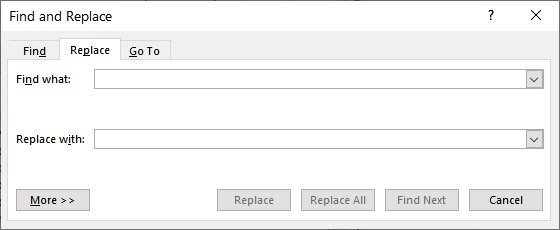Written by Allen Wyatt (last updated October 23, 2024)
This tip applies to Word 2007, 2010, 2013, 2016, 2019, and 2021
Mina's document uses smart quotes. This means that apostrophes after digits (such as 27' meaning 27 feet) need to be manually changed to prime marks. Mina wonders if there is a way, using Find and Replace, to change all apostrophes after digits to primes and all quote marks after digits to double primes.
The easiest way to do this is to follow these steps:

Figure 1. The AutoFormat As You Type tab of the AutoCorrect dialog box.
These steps effectively turn off smart quotes, but it doesn't change any smart quotes already existing in your document. (It is step 5 that controls the option.) Now you are ready to do your find and replace operation:

Figure 2. The Replace tab of the Find and Replace dialog box.
Note that in step 2 there is a trailing apostrophe, along with the same in step 3. This means you are first replacing any number followed by an apostrophe with that original number and apostrophe followed by another (a second) apostrophe. This is why you need to perform steps 6-8, to get rid of the extra apostrophe.
When done, you can repeat the same steps, but using quote marks in steps 2, 3, 6, and 7. Close the Find and Replace dialog box, and then repeat the earlier steps to turn smart quotes back on (step 5). The result is that you end up with primes instead of smart quotes (or smart apostrophes) after your digits.
WordTips is your source for cost-effective Microsoft Word training. (Microsoft Word is the most popular word processing software in the world.) This tip (7691) applies to Microsoft Word 2007, 2010, 2013, 2016, 2019, and 2021.

The First and Last Word on Word! Bestselling For Dummies author Dan Gookin puts his usual fun and friendly candor back to work to show you how to navigate Word 2019. Spend more time working and less time trying to figure it all out! Check out Word 2019 For Dummies today!
If you inadvertently move to the end of the document, you might be wondering how to get your insertion point back to ...
Discover MoreIt drives some people crazy to have a date break across two lines. If you find yourself in this mindset, then you'll ...
Discover MoreWord provides access to a wide variety of characters either from the keyboard or from the Symbol dialog box. Up and above ...
Discover MoreFREE SERVICE: Get tips like this every week in WordTips, a free productivity newsletter. Enter your address and click "Subscribe."
2024-10-23 12:59:05
It would likely be more straightforward to use the proper characters: prime and double prime.
In a document that already has single and double quotation marks, replace a single quotation mark following a number with a single prime. To enter it, hold down an Alt key (in Windows) and, on the numeric keypad, type 8242; release the Alt key. To enter a double prime, hold down an Alt key and type 8243. (You'll still have to make the second pass to remove the original quotation mark; replace apostrophe and single prime with single prime and quotation mark and double prime with double prime.)
A user can always map a character such as a single or double prime to a unique keystroke. Word does not seem to have a default keystroke dedicated to these characters. Perhaps assign them to Ctrl+/,' and Ctrl+/," That is, hold down a Ctrl key (in Windows) and type the slash, let go and type the apostrophe or the quotation mark. Or, since you're typing numbers and potentially using the number pad, assign the characters to Ctrl+NumPad 1 and Ctrl+NumPad 2. Choose whatever is the easiest to both remember and use on a daily basis.
Got a version of Word that uses the ribbon interface (Word 2007 or later)? This site is for you! If you use an earlier version of Word, visit our WordTips site focusing on the menu interface.
Visit the WordTips channel on YouTube
FREE SERVICE: Get tips like this every week in WordTips, a free productivity newsletter. Enter your address and click "Subscribe."
Copyright © 2025 Sharon Parq Associates, Inc.
Comments